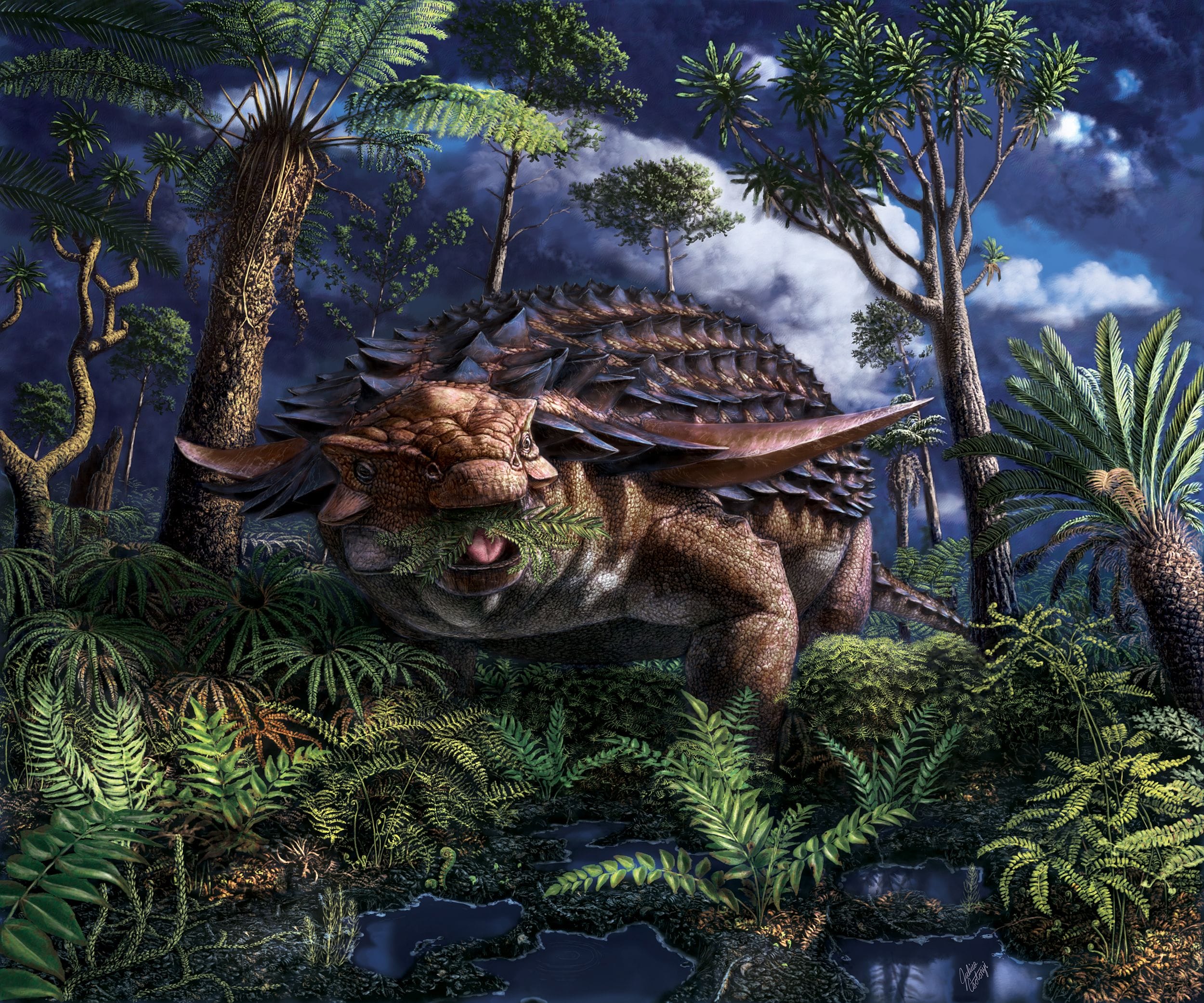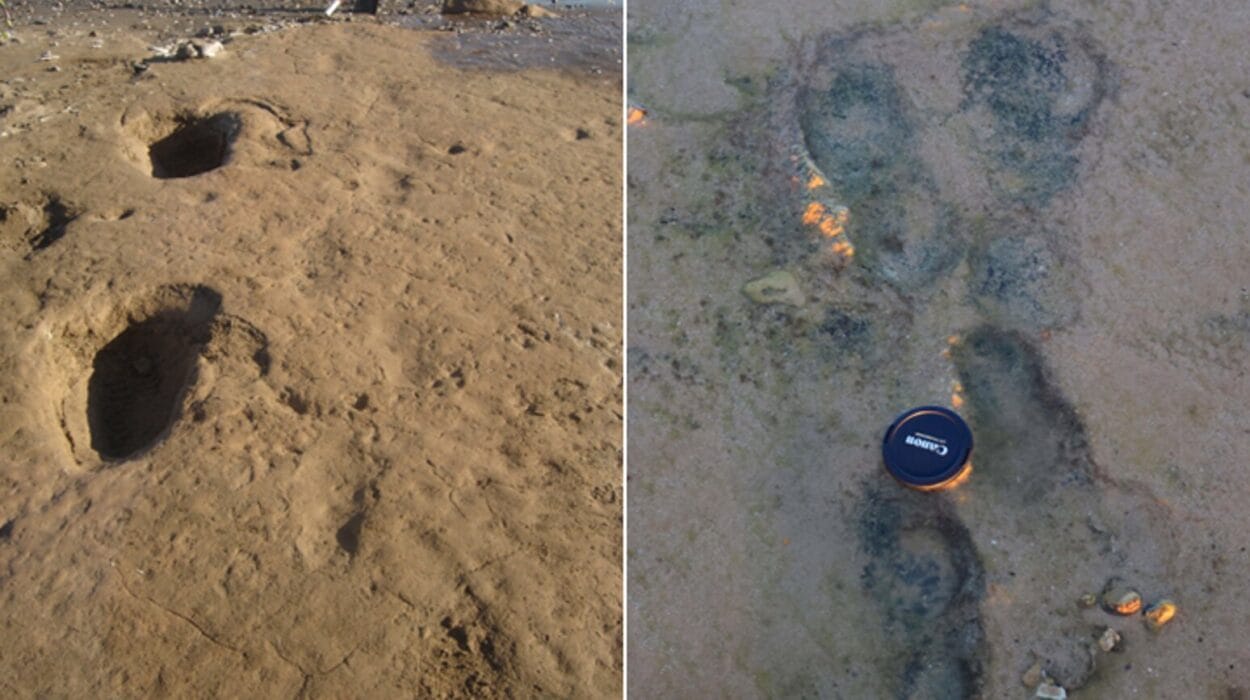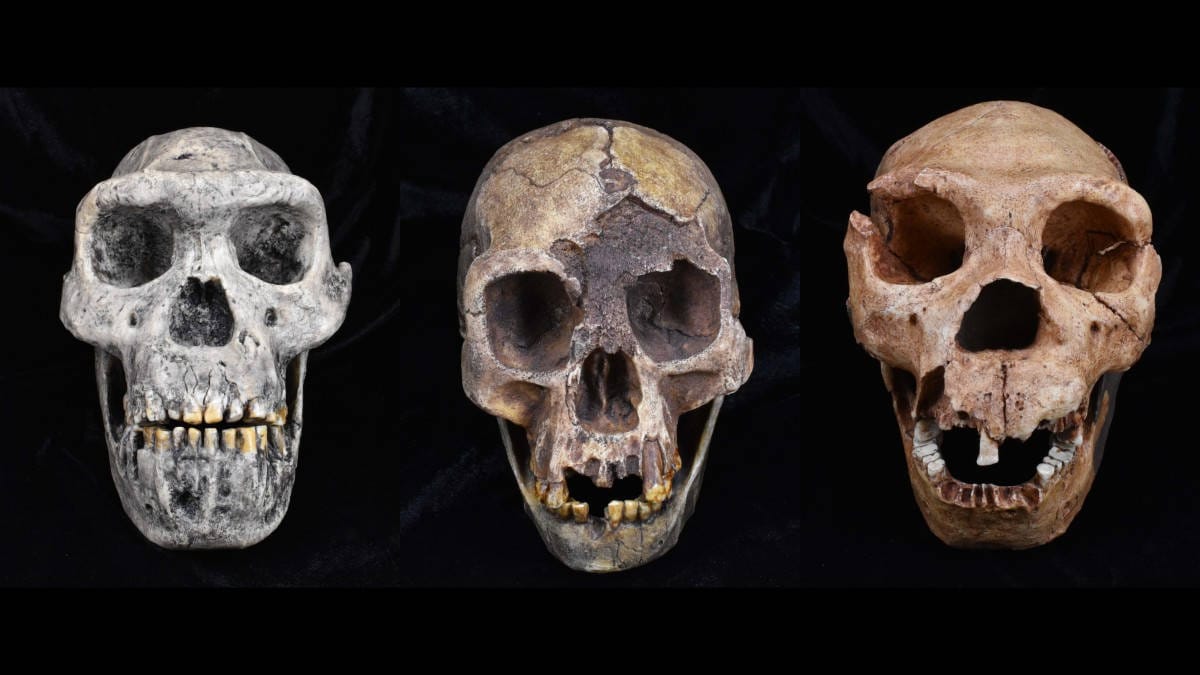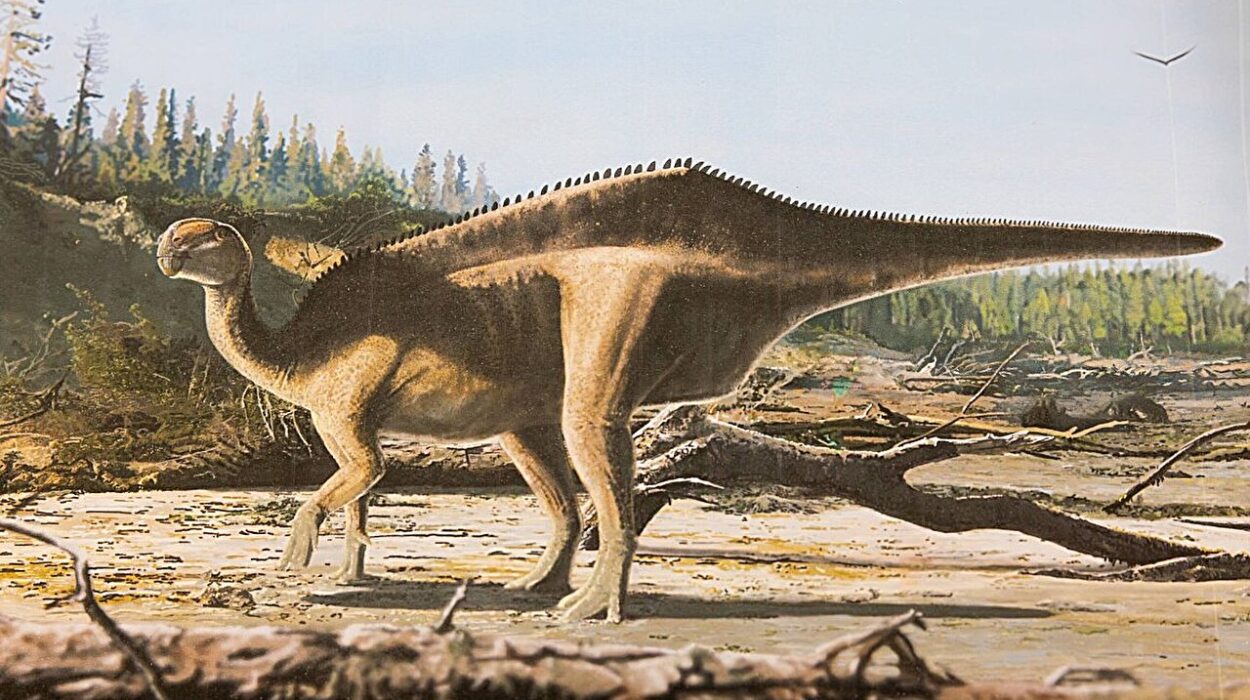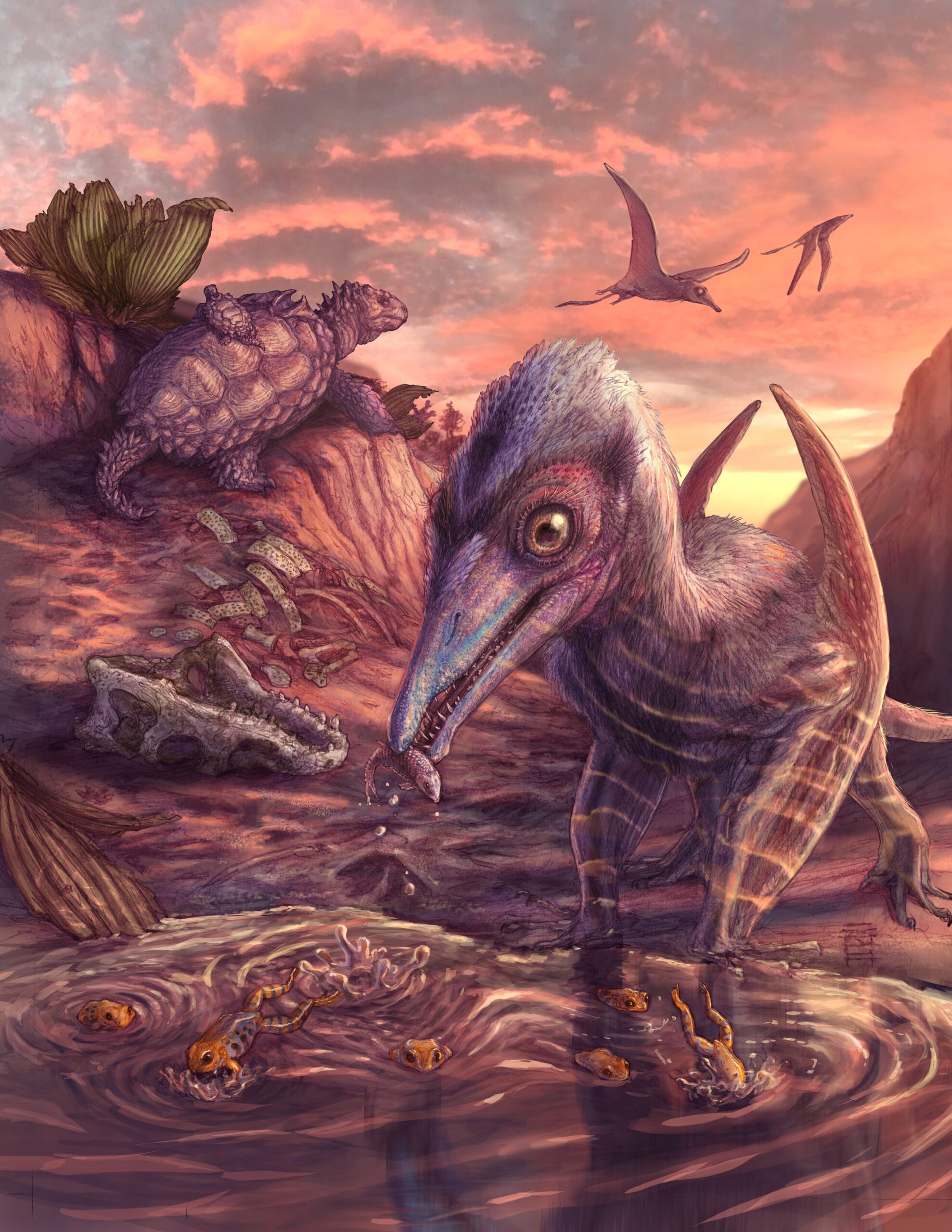Deep in the rugged hills of Alberta, Canada, on a seemingly ordinary day in 2011, a heavy-machine operator named Shawn Funk struck something solid. His backhoe had bitten into the oily rock of a mining site known for its rich deposits of ancient marine fossils. But what emerged from the dark stone was no ordinary relic of Earth’s history—it was the unmistakable armor-plated body of a dinosaur. Perfectly preserved, eerily lifelike, and locked in stone for over 110 million years, this discovery would turn out to be not only astonishing in its completeness but transformative in our understanding of prehistoric life.
It was a nodosaur—a member of the armored ankylosaur family, a plant-eating dinosaur that walked the Earth during the Early Cretaceous period. But unlike any other fossil of its kind, this one still wore its skin, its armor plates were intact, and its body posture seemed frozen in motion. It was more than a fossil; it was a moment in time, mummified by nature itself.
This is the story of the most complete dinosaur fossil ever found: the incredible Borealopelta markmitchelli.
Time Travelers in Stone
Fossils are windows into the past, but rarely are they crystal clear. Most dinosaur remains are fragmentary—partial skeletons, isolated teeth, shattered femurs, or a jumble of bones scattered across ancient floodplains. What paleontologists uncover, more often than not, are puzzles missing most of their pieces.
To find a complete or near-complete fossil is a rare marvel. To find one that includes skin impressions, intact body armor, stomach contents, and its original life posture borders on the miraculous.
That is precisely what happened in the oil sands of Alberta.
The preservation of Borealopelta was so exquisite that it stunned even the seasoned researchers at the Royal Tyrrell Museum of Palaeontology, where the specimen now resides. This nodosaur was not just bones—it was skin, armor, organic pigments, and secrets fossilized in mid-breath. Unlike typical skeletons lying flat in sediment, this dinosaur had retained its three-dimensional shape. It had not collapsed like a deflated balloon but had fossilized in lifelike volume and detail.
It was, and still is, one of the most complete dinosaur fossils ever discovered. But how did such extraordinary preservation happen?
The Fall and Rise of a Giant
Over 110 million years ago, during the Early Cretaceous period, Borealopelta markmitchelli roamed what is now western Canada. It was a tank of a creature—approximately 18 feet long, weighing more than 1.5 tons, clad in rows of bony plates and protective spikes that guarded its flanks like a medieval knight’s armor. Despite its imposing looks, it was a peaceful herbivore, nibbling on ferns and cycads under coniferous canopies.
The prevailing hypothesis suggests that one fateful day, this animal wandered too close to a riverbank or coastal shelf and died—perhaps from injury, disease, or misadventure. Its body, still armored and heavy, was swept away by floodwaters into the ocean that once covered parts of what is now Alberta.
Once submerged, it sank quickly. Its armored corpse, usually prone to bloating and disintegration like any decaying organic matter, instead found refuge in a thick slurry of sediment on the ocean floor. Rapid burial ensued. Over millions of years, minerals infiltrated the body, replacing soft tissue molecule by molecule in a process known as permineralization.
What made this specimen stand out was not just the speed of this process, but its perfection. The skin, keratinous spikes, and even pigments responsible for camouflage had been preserved. For the first time in paleontology, we could look at a dinosaur not just as a skeleton or silhouette—but as a fully formed animal, sculpted by evolution and shaped by an ancient world.
A Glimpse Into a Lost World
When the fossil was first unearthed, nobody truly grasped the magnitude of what lay before them. It took over 7,000 hours for technician Mark Mitchell to prepare the fossil for study—painstakingly chiseling away at the hard matrix with dental tools and needles under a microscope. It was an act of patience, devotion, and awe. When the fossil was finally unveiled, it left everyone speechless.
It was not only complete from the snout to the hips, but the armor plates—known as osteoderms—were still embedded in the skin. Each scale, each bump, each curve had been preserved. The spikes protruding from the shoulders were sharp and menacing, revealing that even plant-eaters needed to fend off predators.
Even more astonishing was the fossil’s pigmentation. Chemical analysis revealed traces of melanin, specifically pheomelanin, the pigment responsible for reddish-brown hues in animals today. This allowed scientists to reconstruct not just its shape, but its coloration—something almost never possible with fossilized remains.
The discovery showed that Borealopelta used countershading—a camouflage strategy still employed by deer, rabbits, and many fish today. Its back was dark to blend into the forest floor when viewed from above, while its belly was lighter to match the sky when seen from below. This told paleontologists something humbling: despite its armor, this dinosaur had natural enemies. Even a walking fortress needed stealth to survive.
Science Resurrects the Beast
Once Borealopelta was studied in detail, it became more than just a fossil. It became a paleobiological revelation.
Its stomach contents were found—again, an extremely rare find. Inside were fossilized plant remains: ferns, mostly, and some charcoal. The presence of charred vegetation suggested that this dinosaur may have been browsing in a recently burned forest. It also offered a rare peek into ancient ecological succession—the way plant communities recover after wildfires.
This single specimen gave scientists insight into:
- Dietary behavior, showing preferences for specific types of ferns over others.
- Defense mechanisms, including armor and pigmentation for camouflage.
- Ecosystem interactions, such as grazing in post-fire landscapes.
- Predator-prey dynamics, hinting at a world where even heavily armored dinosaurs needed to hide.
The fossil was so pristine that it sparked debate over the very term “fossil.” This wasn’t a lifeless relic. It had retained so much of its structure and form that some scientists half-jokingly dubbed it a “dinosaur mummy”—a preservation more associated with Egypt than the Mesozoic.
Beyond Bones: Why Completeness Matters
When paleontologists speak of completeness, they mean more than just the physical percentage of bones present. A complete fossil tells a complete story. It doesn’t just show what the dinosaur was, but how it lived, how it moved, what it ate, how it fought, and how it died.
Most dinosaur skeletons are found flattened, distorted, missing key limbs, or scattered across meters of rock. Reconstructing them requires inference and comparison with other species. But with Borealopelta, scientists didn’t have to guess. They could see.
They saw the contours of muscles, the wrinkles in skin, the curve of armor plates that protected vulnerable joints. They saw how the shoulder spikes likely acted as a visual deterrent, perhaps playing a role in mating displays or territory defense. They saw how an ancient animal, long extinct, had lived as richly and vividly as any modern creature.
The completeness of this fossil offered an emotional jolt as well. It reminded scientists and visitors alike that these were not mythical beasts or artistic reconstructions—they were once alive, with habits, fears, environments, and evolutionary strategies.
The Name That Honors Dedication
When the time came to formally name the dinosaur, scientists chose the genus Borealopelta, meaning “northern shield,” a nod to its armor and Canadian origin. The species name, markmitchelli, honored Mark Mitchell, the man who had labored for years to bring this fossil to light.
It was a fitting tribute. In science, as in life, it’s often the quiet, diligent work behind the scenes that brings about the most astonishing breakthroughs. Mitchell’s work ensured that future generations would not only study Borealopelta but feel something of the world it once inhabited.
A Global Sensation
When the fossil was unveiled to the public in 2017 at the Royal Tyrrell Museum, it drew worldwide acclaim. People wept. Children stared wide-eyed. Journalists called it a real-life “dragon,” and the museum’s attendance soared.
Photographs of the fossil went viral, and for good reason—it looked like a statue carved by ancient hands, or a creature from myth turned to stone. But it was real, and it had waited more than 100 million years to be seen again.
In a world often consumed by cynicism, Borealopelta was a reminder of awe. It was a message from a forgotten world, whispering through stone: “We were here. We lived. We mattered.”
What We Still Don’t Know
Despite its completeness, Borealopelta still poses questions. What predators hunted it, prompting such advanced camouflage? How widespread was its color pattern among other nodosaurs? Did it live in herds or solitude? How far did it migrate?
These mysteries persist not because the fossil is incomplete, but because even the most perfect preservation can’t capture every nuance of behavior. But that’s the magic of paleontology—it teaches us to be detectives of deep time, piecing together stories from what nature leaves behind.
Each fossil is a sentence in Earth’s autobiography. Borealopelta is a paragraph so vivid, so eloquent, that it rewrote whole chapters.
Other Contenders: A Brief Note
While Borealopelta markmitchelli is currently considered the most complete dinosaur fossil in terms of preservation quality, three-dimensional shape, and skin retention, it’s worth noting a few other famous discoveries:
- The Fighting Dinosaurs (Velociraptor and Protoceratops locked in combat): Incredible snapshot of behavior.
- Dakota (a hadrosaur “mummy” with skin impressions): Another example of soft-tissue preservation.
- Sinosauropteryx (first dinosaur with preserved feathers): Revolutionized our understanding of dinosaur-to-bird evolution.
Each is unique, but none combine skin, armor, pigmentation, stomach contents, and body posture as elegantly as Borealopelta.
Why It Matters to Us
In the end, the story of the most complete dinosaur fossil ever found is not just a triumph of science—it’s a testament to the power of wonder. It reminds us that Earth’s past is not a closed book but a living narrative, still unfolding, still capable of surprising us.
In a single fossil, we find echoes of biology, geology, evolution, and time. We see not only what was—but what is possible when curiosity and patience meet in the pursuit of truth.
Borealopelta doesn’t just belong to paleontology. It belongs to all of us. It’s a bridge across time, a connection to a planet that existed before cities, before mammals, before the moon had drifted to its current place in the sky.
And through it, we are reminded: The Earth remembers everything.
